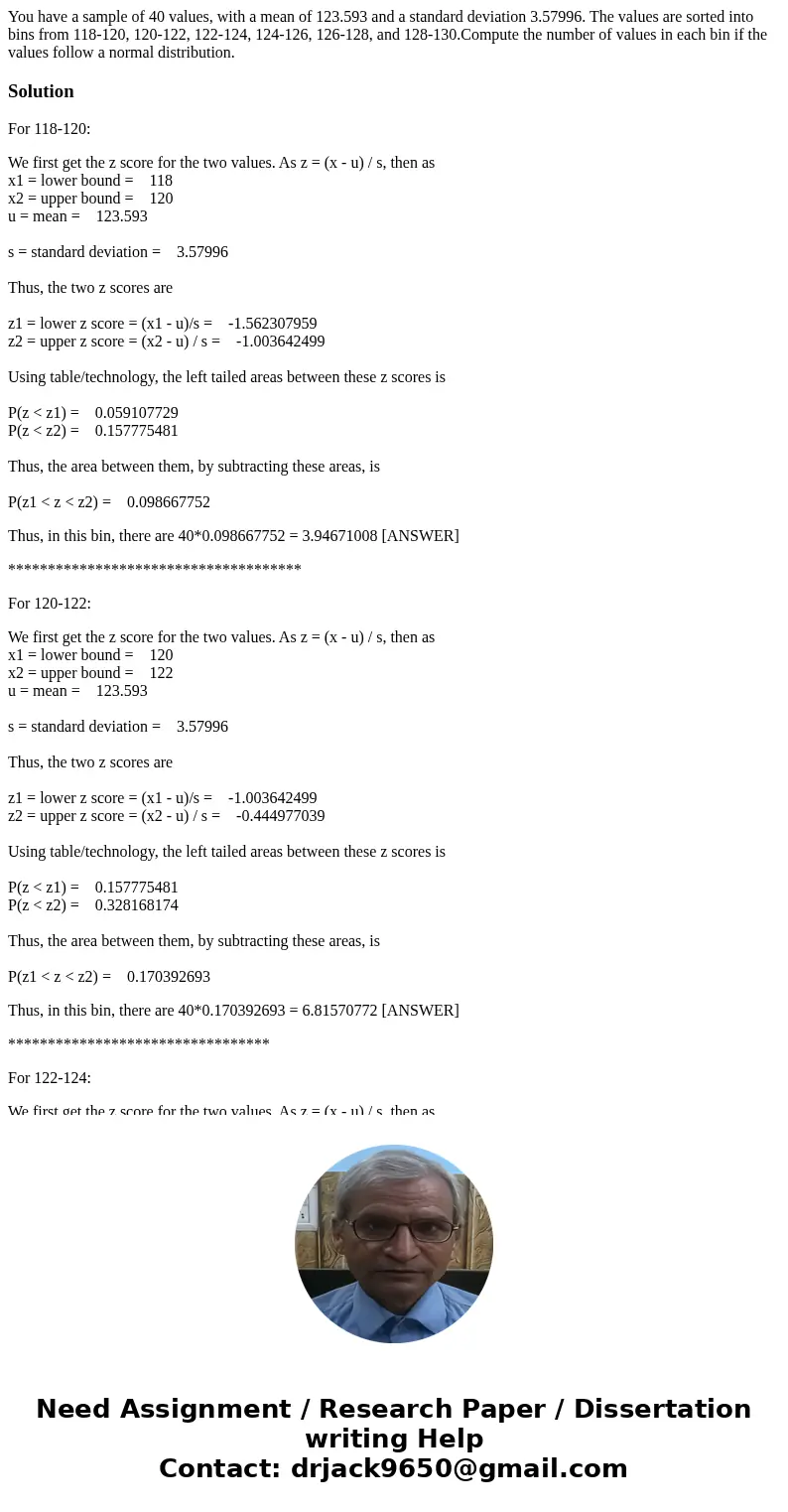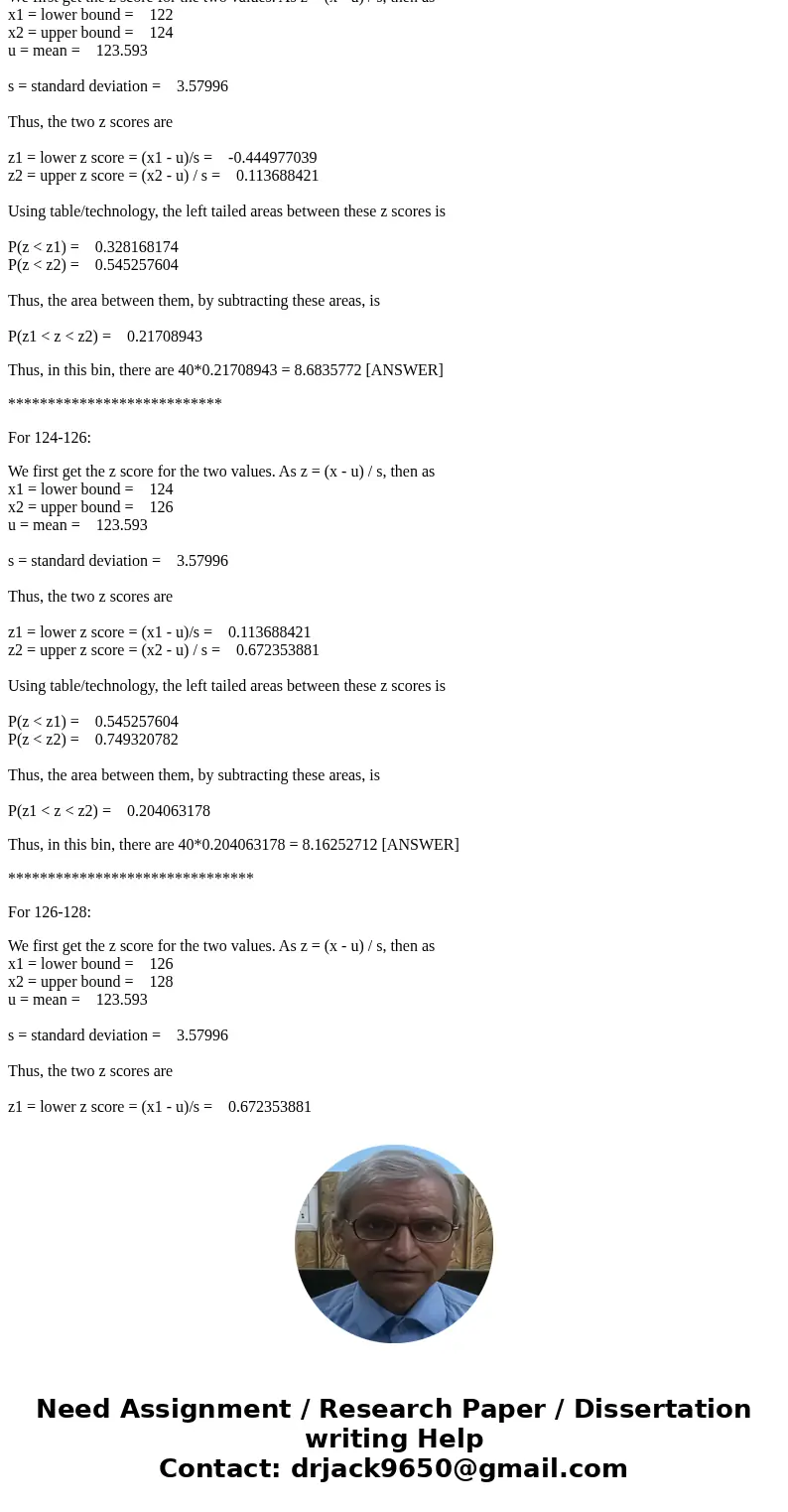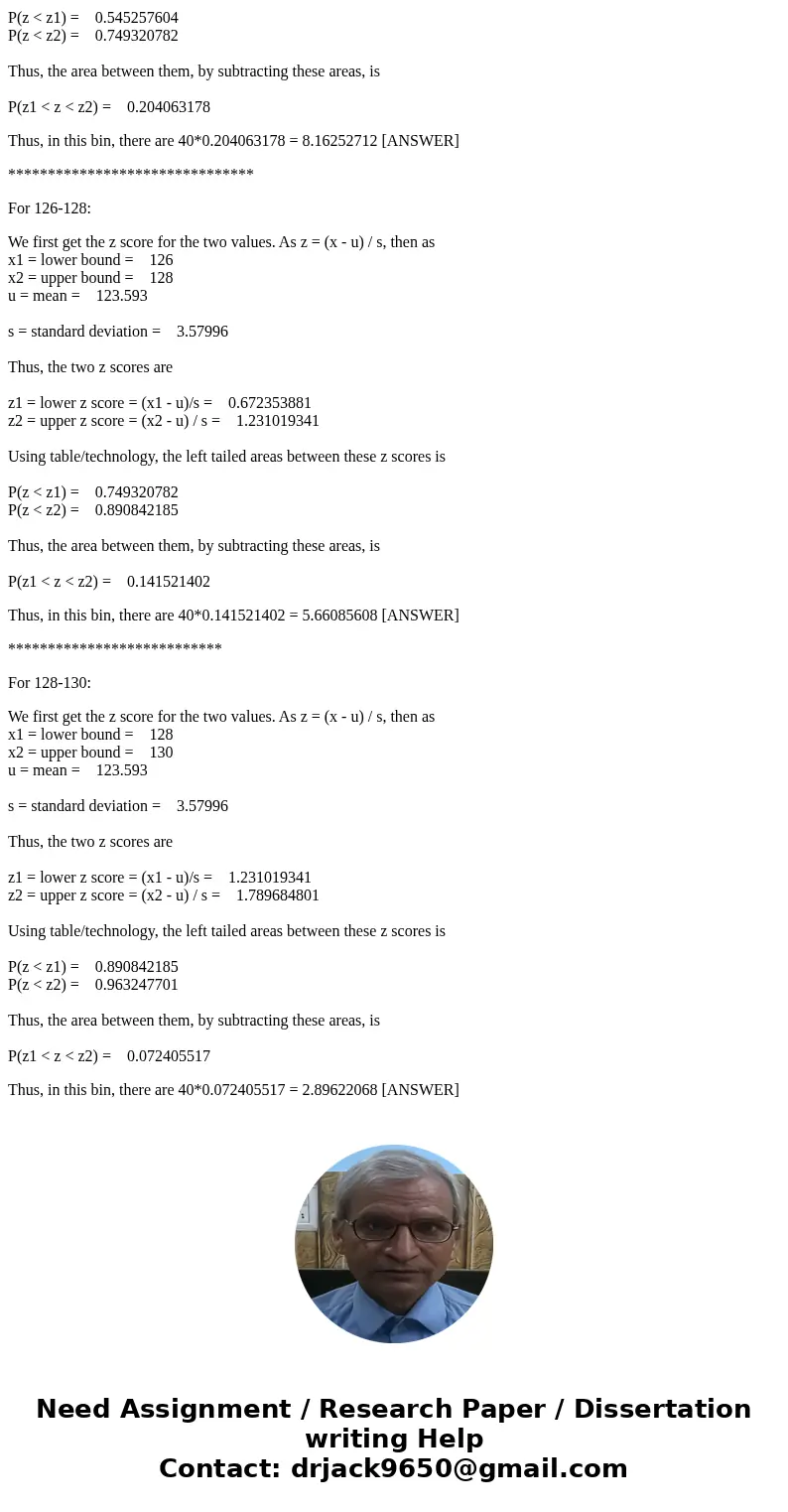You have a sample of 40 values with a mean of 123593 and a s
You have a sample of 40 values, with a mean of 123.593 and a standard deviation 3.57996. The values are sorted into bins from 118-120, 120-122, 122-124, 124-126, 126-128, and 128-130.Compute the number of values in each bin if the values follow a normal distribution.
Solution
For 118-120:
We first get the z score for the two values. As z = (x - u) / s, then as
x1 = lower bound = 118
x2 = upper bound = 120
u = mean = 123.593
s = standard deviation = 3.57996
Thus, the two z scores are
z1 = lower z score = (x1 - u)/s = -1.562307959
z2 = upper z score = (x2 - u) / s = -1.003642499
Using table/technology, the left tailed areas between these z scores is
P(z < z1) = 0.059107729
P(z < z2) = 0.157775481
Thus, the area between them, by subtracting these areas, is
P(z1 < z < z2) = 0.098667752
Thus, in this bin, there are 40*0.098667752 = 3.94671008 [ANSWER]
*************************************
For 120-122:
We first get the z score for the two values. As z = (x - u) / s, then as
x1 = lower bound = 120
x2 = upper bound = 122
u = mean = 123.593
s = standard deviation = 3.57996
Thus, the two z scores are
z1 = lower z score = (x1 - u)/s = -1.003642499
z2 = upper z score = (x2 - u) / s = -0.444977039
Using table/technology, the left tailed areas between these z scores is
P(z < z1) = 0.157775481
P(z < z2) = 0.328168174
Thus, the area between them, by subtracting these areas, is
P(z1 < z < z2) = 0.170392693
Thus, in this bin, there are 40*0.170392693 = 6.81570772 [ANSWER]
*********************************
For 122-124:
We first get the z score for the two values. As z = (x - u) / s, then as
x1 = lower bound = 122
x2 = upper bound = 124
u = mean = 123.593
s = standard deviation = 3.57996
Thus, the two z scores are
z1 = lower z score = (x1 - u)/s = -0.444977039
z2 = upper z score = (x2 - u) / s = 0.113688421
Using table/technology, the left tailed areas between these z scores is
P(z < z1) = 0.328168174
P(z < z2) = 0.545257604
Thus, the area between them, by subtracting these areas, is
P(z1 < z < z2) = 0.21708943
Thus, in this bin, there are 40*0.21708943 = 8.6835772 [ANSWER]
***************************
For 124-126:
We first get the z score for the two values. As z = (x - u) / s, then as
x1 = lower bound = 124
x2 = upper bound = 126
u = mean = 123.593
s = standard deviation = 3.57996
Thus, the two z scores are
z1 = lower z score = (x1 - u)/s = 0.113688421
z2 = upper z score = (x2 - u) / s = 0.672353881
Using table/technology, the left tailed areas between these z scores is
P(z < z1) = 0.545257604
P(z < z2) = 0.749320782
Thus, the area between them, by subtracting these areas, is
P(z1 < z < z2) = 0.204063178
Thus, in this bin, there are 40*0.204063178 = 8.16252712 [ANSWER]
*******************************
For 126-128:
We first get the z score for the two values. As z = (x - u) / s, then as
x1 = lower bound = 126
x2 = upper bound = 128
u = mean = 123.593
s = standard deviation = 3.57996
Thus, the two z scores are
z1 = lower z score = (x1 - u)/s = 0.672353881
z2 = upper z score = (x2 - u) / s = 1.231019341
Using table/technology, the left tailed areas between these z scores is
P(z < z1) = 0.749320782
P(z < z2) = 0.890842185
Thus, the area between them, by subtracting these areas, is
P(z1 < z < z2) = 0.141521402
Thus, in this bin, there are 40*0.141521402 = 5.66085608 [ANSWER]
***************************
For 128-130:
We first get the z score for the two values. As z = (x - u) / s, then as
x1 = lower bound = 128
x2 = upper bound = 130
u = mean = 123.593
s = standard deviation = 3.57996
Thus, the two z scores are
z1 = lower z score = (x1 - u)/s = 1.231019341
z2 = upper z score = (x2 - u) / s = 1.789684801
Using table/technology, the left tailed areas between these z scores is
P(z < z1) = 0.890842185
P(z < z2) = 0.963247701
Thus, the area between them, by subtracting these areas, is
P(z1 < z < z2) = 0.072405517
Thus, in this bin, there are 40*0.072405517 = 2.89622068 [ANSWER]



 Homework Sourse
Homework Sourse